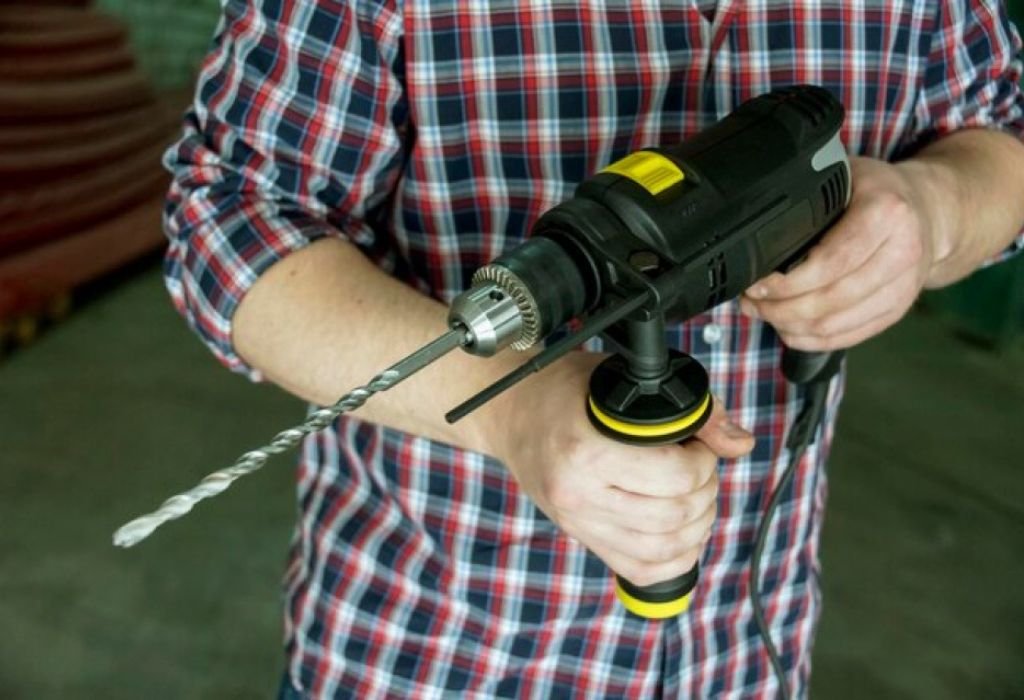Imagine standing at a job site, staring at a thick slab of concrete that needs breaking.
You grab a drill, but within seconds it struggles, overheats, and barely scratches the surface.
At this moment, the question arises: Is a rotary hammer the same as a jackhammer?
The confusion is common. Both tools are designed for heavy-duty work, yet their power, size, and purpose differ dramatically.
A rotary hammer combines drilling and hammering, making it ideal for tasks like anchoring bolts or chipping small sections of masonry.
A jackhammer, on the other hand, is built purely for demolition, capable of breaking sidewalks, roads, and reinforced concrete.
Misunderstanding the difference can lead to wasted effort, tool damage, or even injury. Choosing the right tool for the job not only saves time but also ensures efficiency and safety.
The global construction equipment market, valued at over $180 billion in 2022 (Statista), highlights how demand for specialized tools like rotary hammers and jackhammers continues to rise.
Professionals and DIY users alike benefit when they understand which tool to pick and why.
This guide will clarify the confusion by comparing both tools in depth. You will learn how each works, their best applications, and the key safety practices to follow.
By the end, you’ll know exactly when to reach for a rotary hammer and when a jackhammer is the smarter choice.
What Is a Rotary Hammer?

A rotary hammer is a power tool that combines rotation with a hammering motion. It is designed to drill and chip through tough materials such as concrete, brick, and stone.
Instead of relying solely on spinning like a regular drill, the rotary hammer uses a piston mechanism that delivers impact energy directly to the bit. This makes it far more powerful than a standard hammer drill.
Rotary hammers typically use SDS-Plus or SDS-Max bits, which lock securely into place. This system prevents slippage and ensures efficient power transfer.
These tools are versatile because they often have multiple modes: drilling, hammer drilling, and chiseling. This flexibility makes them ideal for projects that require both precision and strength.
Q&A on Rotary Hammers
What jobs are rotary hammers best for?
They are best for drilling anchor holes, chiseling tiles, or breaking small sections of concrete.
Are rotary hammers heavy?
Most weigh between 5–15 pounds, making them manageable for extended use.
Do rotary hammers need special bits?
Yes, they use SDS bits designed to handle the hammering force.
Can you use a rotary hammer for wood?
While possible, it’s not recommended because the power is excessive for softer materials.
Are rotary hammers safe for DIY users?
Yes, but proper safety gear and handling are essential.
What Is a Jackhammer?
A jackhammer is a powerful demolition tool built exclusively for breaking and destroying hard materials. Unlike a rotary hammer, it does not drill. Instead, it delivers continuous hammering force to smash surfaces apart.
Jackhammers are typically much larger and heavier than rotary hammers. They can weigh anywhere from 25 to over 90 pounds depending on the model and power source.
There are three main types: pneumatic (air-powered), electric, and hydraulic. Pneumatic jackhammers are common on roadwork sites, while electric versions are often used for indoor demolition projects.
The primary role of a jackhammer is brute force. It is not designed for precision, only for breaking materials such as sidewalks, foundations, and asphalt roads.
Q&A on Jackhammers
What is the main purpose of a jackhammer?
It is designed for demolition, breaking concrete, stone, or asphalt.
How heavy is a jackhammer?
Depending on the type, they range from 25 to 90 pounds.
Do jackhammers require compressors?
Yes, pneumatic models need an air compressor to operate.
Can a jackhammer drill holes?
No, it is only for breaking and not for drilling.
Are jackhammers safe indoors?
Electric versions can be used indoors, but ear and eye protection are crucial.
Rotary Hammer vs Jackhammer: Key Differences
Although both tools can break hard materials, they are not interchangeable. Their differences lie in size, design, power, and use cases.
Rotary hammers are lighter and versatile, making them ideal for smaller demolition and drilling tasks. Jackhammers are much heavier and built strictly for large-scale demolition.
Rotary hammers allow more control and precision, while jackhammers focus solely on maximum breaking force.
Price also plays a role. Rotary hammers are more affordable and widely available, while jackhammers are costly and often rented instead of purchased.
Q&A on Key Differences
Which is more powerful, a rotary hammer or jackhammer?
A jackhammer delivers more raw breaking power.
Which tool is easier to handle?
A rotary hammer is lighter and easier to control.
Can they be used for the same jobs?
No, rotary hammers are for drilling and light demolition, while jackhammers are for heavy demolition.
Which is better for home projects?
A rotary hammer is usually the better choice for DIY work.
Do both tools require special training?
Jackhammers often require more training due to their weight and vibration.
When to Use a Rotary Hammer
Rotary hammers are the go-to tool when you need to drill holes in masonry, install anchors, or remove tiles. They are efficient for medium-intensity jobs where both drilling and hammering are required.
They are commonly used in construction, remodeling, and maintenance tasks where precision and versatility matter.
For homeowners, a rotary hammer is useful when mounting heavy fixtures or performing renovations involving concrete walls or floors.
Q&A on Rotary Hammer Usage
Should you use a rotary hammer for drilling rebar?
Yes, with the right bit, it can cut through concrete and rebar.
Is a rotary hammer good for tile removal?
Yes, especially with the chisel mode.
Can you use a rotary hammer outdoors?
Yes, it works well on patios, driveways, and masonry walls.
Is it better than a hammer drill?
Yes, it delivers far more power and durability.
Do rotary hammers reduce fatigue?
Yes, vibration control systems help reduce user fatigue.
When to Use a Jackhammer
Jackhammers are best suited for large demolition projects such as tearing up sidewalks, breaking road asphalt, or removing thick concrete slabs.
They are typically found on construction sites where heavy-duty breaking is required.
Because of their size and weight, jackhammers are not commonly used for household projects. They are more appropriate for contractors and road crews.
Q&A on Jackhammer Usage
Can you use a jackhammer for small jobs?
No, it is too powerful and heavy for small tasks.
Is a jackhammer better for asphalt?
Yes, it is ideal for breaking asphalt and pavement.
Can a jackhammer be used indoors?
Only electric models should be used indoors due to noise and exhaust issues.
Do jackhammers require two people?
Some larger models may need two operators, but most can be used by one person.
How long can you run a jackhammer?
Sessions are usually limited to reduce vibration-related injuries.
Safety Tips for Both Tools

Safety is critical when using high-powered demolition tools. Both rotary hammers and jackhammers can cause injury if mishandled.
Always wear safety glasses, ear protection, gloves, and steel-toe boots. Use dust masks when working indoors or with materials that create debris.
Be mindful of vibration exposure, as long-term use can cause health issues. Take breaks frequently and use vibration-dampening equipment when possible.
Follow manufacturer guidelines for handling, bit installation, and maintenance to prevent accidents.
Q&A on Safety
Do you need hearing protection?
Yes, both tools are extremely loud.
Can vibration cause injury?
Yes, prolonged use can lead to hand-arm vibration syndrome.
Should you wear a dust mask?
Yes, especially when working with concrete or stone.
Is steel-toe footwear necessary?
Yes, it protects against falling debris and tool mishaps.
Can beginners use these tools safely?
Yes, but only with proper guidance and protective gear.
Conclusion
So, is a rotary hammer the same as a jackhammer? The answer is no. While both are designed to tackle hard surfaces, their functions, size, and power levels are entirely different.
A rotary hammer is the right choice for drilling, anchoring, and light demolition. A jackhammer, however, is the tool for large-scale demolition and roadwork.
Understanding these differences ensures you pick the right tool for the right job. Whether you are a professional contractor or a DIY enthusiast, making the right choice saves time, money, and effort.

I’m John F. Nicholas, the founder, lead writer, and drill enthusiast behind 101drill.com. With years of hands-on experience in power tools and DIY projects, I created this platform to share practical knowledge, expert tips, and real-world insights to help others master the art of drilling.
